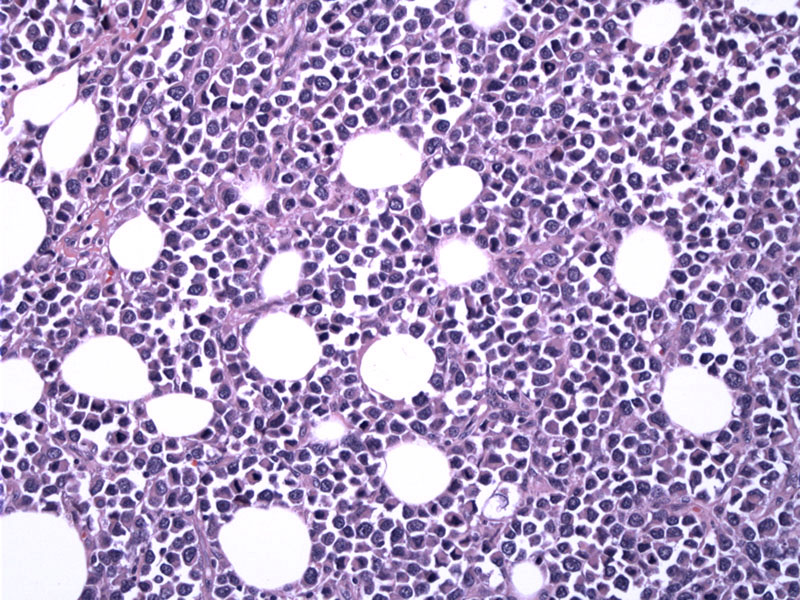

Sheets of discohesive pleomorphic cells are seen, with no architecture or duct formation.
Mitotic activity is easy to find; note the angulated irregular hyperchromatic nuclei.
A second example consisting of a diffuse bombardment of parenchyma with cells. The degree of pleomorphism sometimes makes the diagnosis difficult.
The infiltrate is patternless, with variable nuclear pleomorphism.
An attempt at some chaining of cells is noticeable. Some cells with a cytoplasmic mucin vacuole pushing the nucleus to the periphery are also evidence.
Variants of infiltrating lobular carcinoma include classical, alveolar, solid, tubulolobular and pleomorphic. In the pleomorphic variant, tumor cells exhibit the usual characteristics of lobular carcinoma (e.g. single filing, eccentrically placed nuclei, lack of cohesion, cytoplastic lumina). Pleomorphic ILC have marked cytologic and nuclear pleomorphism, and the cells tend to be larger and more eosinophilic as well. Apocrine differentiation has been suggested.
This variant exhibits more aggressive behavior compared to the other subtypes (Vargas).
→Exhibits more aggressive behavior compared to other subtypes of lobular carcinoma.
• Lobular : Lobular Carcinoma in Situ, Pleomorphic Variant
Fletcher CDM, ed. Diagnostic Histopathology of Tumors. 3rd Ed. Philadelphia, PA: Elsevier; 2007: 932.
Vargas AC, et al. Pleomorphic lobular carcinoma of the breast: molecular pathology and clinical impact. Future Oncol. 2009 Mar;5(2):233-43.
